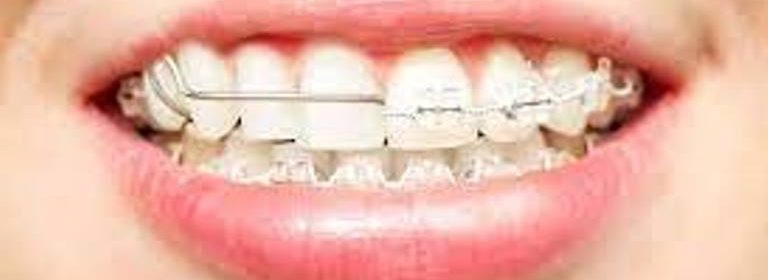Enhancing the Article: A Comprehensive Guide to Dental Braces

Article by Remarkable Smiles
Navigating the realm of orthodontic treatment is akin to embarking on a transformative journey towards a radiant smile and enhanced oral health. Within this landscape, dental braces stand as stalwarts, heralding alignment and symmetry amidst dental irregularities. This comprehensive guide aims to illuminate the myriad facets of dental braces, offering discerning insights into their diverse types, accompanying pros and cons, and indispensable care protocols for optimal treatment outcomes.
Exploring the Spectrum of Dental Braces
Traditional Metal Braces
Pros:
Economical Efficacy: Metal braces emerge as the quintessential choice for cost-conscious individuals, offering a budget-friendly avenue towards orthodontic correction.
Reliable Resilience: Renowned for their unwavering efficacy, metal braces seamlessly tackle complex teeth and jaw misalignments with unparalleled precision.
Ubiquitous Accessibility: Widely available across orthodontic practices, metal braces offer accessibility without compromising on efficacy.
Cons:
Aesthetic Considerations: While undeniably effective, the conspicuous appearance of metal braces may deter individuals seeking a subtler orthodontic solution.
Transitional Discomfort: Patients may encounter transient discomfort and irritation during the initial adjustment phase, albeit fleeting in nature.
Ceramic Braces
Pros:
Aesthetic Alchemy: Ceramic braces epitomize aesthetic refinement, seamlessly integrating with natural tooth color for a discreet orthodontic experience.
Parity in Performance: Despite their aesthetic allure, ceramic braces boast efficacy tantamount to their metal counterparts, offering viable solutions for a spectrum of orthodontic complexities.
Cons:
Monetary Investment: The aesthetic upgrade of ceramic braces comes at a premium, rendering them a costlier alternative compared to traditional metal braces.
Vigilance against Staining: Patients must exercise caution in their dietary choices to mitigate the risk of staining ceramic brackets, thereby preserving their aesthetic integrity.
Lingual Braces
Pros:
Stealthy Concealment: Positioned discreetly on the inner surface of teeth, lingual braces offer a clandestine orthodontic solution, rendering them imperceptible from external scrutiny.
Versatility in Versatility: Customizable to fit a myriad of orthodontic needs, lingual braces cater to diverse dental complexities with bespoke precision.
Cons:
Articulate Adjustments: Patients may grapple with temporary speech impediments as they acclimate to the presence of lingual braces, a transient inconvenience in pursuit of orthodontic perfection.
Meticulous Maintenance: Cleaning lingual braces demands heightened diligence owing to their unconventional positioning, necessitating meticulous upkeep for optimal oral hygiene.
Invisalign (Clear Aligners)
Pros:
Ethereal Elegance: Invisalign transcends orthodontic convention, offering a near-invisible solution that harmonizes seamlessly with diverse lifestyles and professional aesthetics.
Liberty in Removal: Providing unparalleled convenience, Invisalign aligners afford patients the freedom to remove them during meals and oral hygiene routines, fostering superior oral health maintenance.
Cons:
Scope Limitations: While efficacious for mild to moderate orthodontic concerns, Invisalign may pose limitations in addressing severe dental irregularities, necessitating personalized consultation for suitability assessment.
Adherence Imperative: The efficacy of Invisalign hinges upon steadfast adherence to prescribed wear schedules, underscoring the need for patient compliance to maximize treatment efficacy.
Essential Care and Maintenance Protocols
Oral Hygiene Vigilance: Uphold impeccable oral hygiene standards through diligent brushing after meals and daily flossing, utilizing specialized tools like soft-bristled toothbrushes and orthodontic floss for comprehensive plaque removal.
Dietary Deliberation: Exercise prudence in dietary choices, steering clear of sticky, hard, or chewy foods that jeopardize braces integrity, while embracing smaller, bite-sized alternatives for enhanced safety.
Routine Check-ups: Commit to scheduled orthodontic appointments for adjustments and evaluations, empowering your orthodontist to fine-tune treatment trajectories and address emerging concerns proactively.
Orthodontic Oasis: Alleviate discomfort with orthodontic wax applications to soothe protruding wires or abrasive brackets, ensuring uninterrupted comfort throughout your orthodontic journey.
Sporting Safeguards: Safeguard your braces and teeth during physical activities with customized mouthguards, shielding against potential impact and preserving orthodontic integrity.
Habitual Harmony: Foster a brace-friendly lifestyle by eschewing detrimental habits like pen or pencil chewing, safeguarding orthodontic investments against avoidable damage.
In the labyrinth of dental braces, informed decision-making is paramount, catalyzing a transformative journey towards a harmonious smile and fortified oral health. While each variant bears its unique merits and demerits, the unifying goal of achieving a luminous, confident smile remains immutable. By embracing prudent care practices and heeding orthodontic counsel, individuals embark on a trajectory of orthodontic excellence, traversing towards a horizon illuminated by the radiance of dental brilliance and self-assurance.
At Remarkable Smiles, the dedicated team, led by the esteemed Dr. Mark Rashidi, is committed to enhancing your smile. As an accomplished Orthodontist based in Laguna Hills, we proudly serve the neighboring cities of Lake Forest, Mission Viejo, Laguna Niguel, and Irvine. With a wealth of expertise in various orthodontic treatments, Dr. Mark excels in offering state-of-the-art options like Invisalign, traditional metal braces, and ceramic braces. Your journey to a radiant smile begins here, where personalized care and outstanding results go hand in hand.










